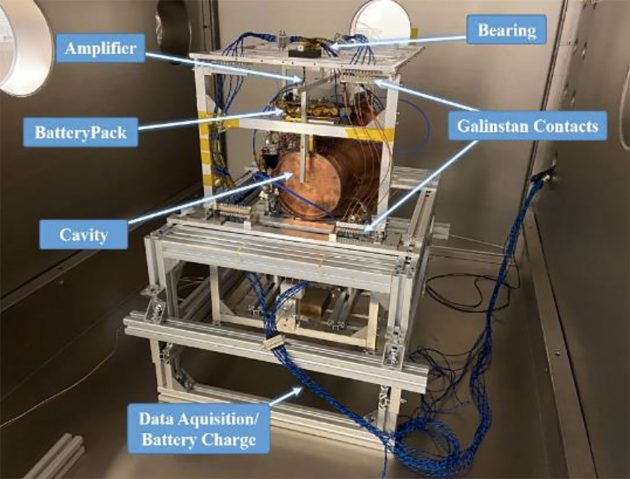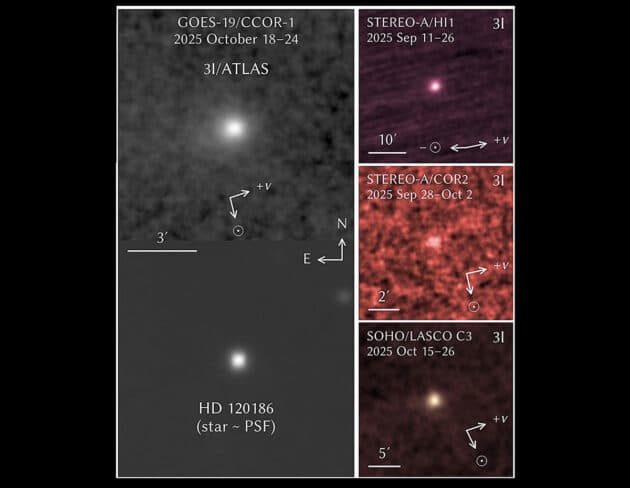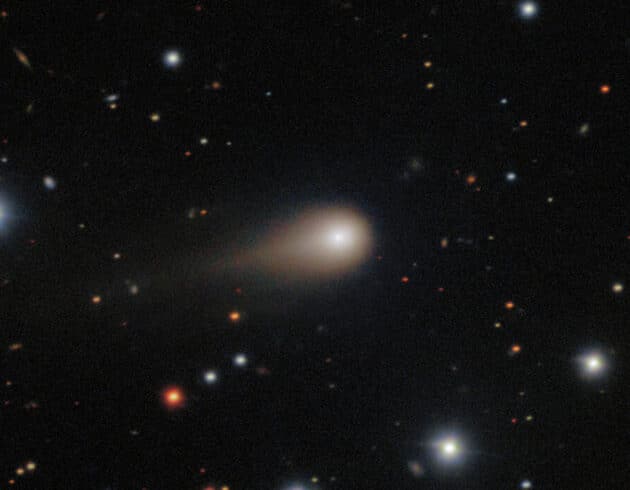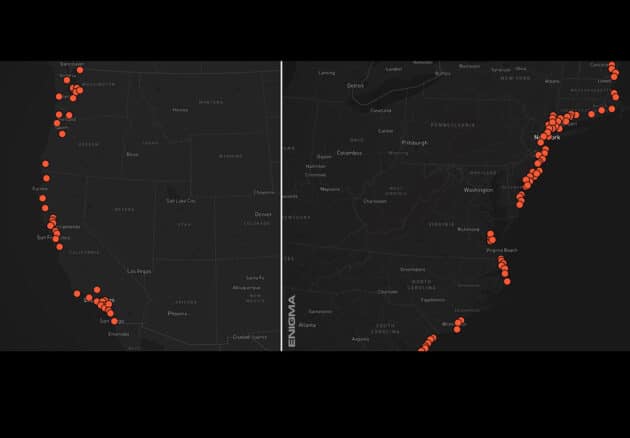Latest EmDrive tests at Dresden University shows „impossible Engine“ does not develop any thrust

Copyright: M. Tajmar et al. 2021
Dresden (Germany) – After tests in NASA laboratories had initially stirred up hope that the so-called EmDrive could represent a revolutionary, fuel-free alternative to space propulsion, the sobering final reports on the results of intensive tests and analyzes of three EmDrive variants by physicists at the Dresden University of Technology (TU Dresden) are now available. Grenzwissenschaft-Aktuell.de (GreWi) has exclusively interviewed the head of studies Prof. Dr. Martin Tajmar about the results.
Find the original German version of this article HERE
As the team led by Prof. Tajmar reported last weekend at the „Space Propulsion Conference 2020 + 1“ (which was postponed due to the Corona pandemic) and published in three accompanying papers in the „Proceedings of Space Propulsion Conference 2020 + 1“ (Paper 1, Paper 2, Paper 3), they had to confirm the previously discussed interim results, according to which the EmDrive does not develop the thrust previously observed by other teams (such as NASA’s Eagleworks and others). The team also confirmed that the already measured thrust forces can be explained by external effects, as they have now been proven by Tajmar and colleagues using a highly sensitive experimental and measurement setup.
On their work on the classical EmDrive Prof. Tajmar reports to GreWi-editor Andreas Müller:
“We found out that the cause of the ‚thrust‘ was a thermal effect. For our tests, we used NASAs EmDrive configuration from White et al. (which was used at the Eagleworks laboratories, because it is best documented and the results were published in the ‚Journal of Propulsion and Power‘.

With the aid of a new measuring scale structure and different suspension points of the same engine, we were able to reproduce apparent thrust forces similar to those measured by the NASA-team, but also to make them disappear by means of a point suspension.

Copyright/Quelle: Christian Hüller / www.tu-dresden.de
When power flows into the EmDrive, the engine warms up. This also causes the fastening elements on the scale to warp, causing the scale to move to a new zero point. We were able to prevent that in an improved structure. Our measurements refute all EmDrive claims by at least 3 orders of magnitude.“
In addition to the classic EmDrive, Tajmar’s team also analyzed the LemDrive-variation:
“This laser variant of the EmDrive is based on theoretical considerations by McCulloch. In numerous experimental set-ups, we have been able to show that both laser resonators and asymmetrical fiber coils do not show any forces that are above normal photon pressure. His theory (…we limit ourselves here to the laboratory standard and not to his astronomical claims), as well as the experiments cited by him are excluded by 4 orders of magnitude.
With both the EmDrive and the LemDrive, we have achieved a measurement accuracy that is below the photon pressure. That is, even if one of these concepts worked, it would be more effective simply to use a laser beam as a drive.”
In a third paper, the Dresden physicists then describe their research on the “Mach-Effect Thruster”:
„Here we have proven that the Mach-Effect-Thruster (an idea by J. Woodward) is unfortunately a vibration artifact and also not a real thrust.“
“Looking back, those was four years of hard work. It is not trivial to carry out clean thrust measurements in this area” Prof. Tajmar concludes. „Unfortunately we weren’t able to verify any of the drive concepts, but we were able to greatly improve our measurement technology as a result, so that we can of course continue researching in this science area and perhaps discover something new.”
© grenzwissenschaft-aktuell.de














